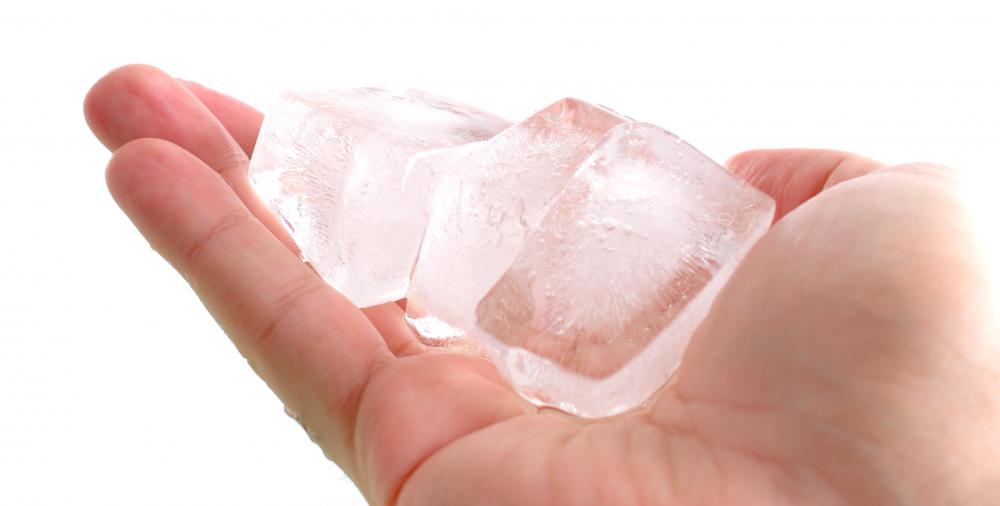At TheHealthBoard, we're committed to delivering accurate, trustworthy information. Our expert-authored content is rigorously fact-checked and sourced from credible authorities. Discover how we uphold the highest standards in providing you with reliable knowledge.
What are the Different Types of Contusion?
One of the most common types of injury is a bruise, or contusion. This injury is typically caused by blunt force trauma that breaks blood vessels, allowing the blood to escape. The pooled blood is visible through the skin as a bruise. There are three main types of contusion: subcutaneous, muscular and periosteal.
A subcutaneous bruise forms just below the surface of the skin. This type of injury may be caused by a fall, being hit with an object or running into something. Subcutaneous bruises are typically among the quickest to disappear, but may remain visible for up to two weeks.

Bruises may go deeper into the body and affect the muscles. A muscular contusion may be classified as intramuscular or intermuscular. Intramuscular bruises are less likely to cause visible bruising, as they only involve tearing of the muscle. In an intermuscular bruise, both the muscle and its surrounding sheath are torn. Recovery from an intermuscular bruise is generally quicker, as the blood is able to escape through the tear in the muscle sheath rather than building up inside the muscle itself.

The deepest type of bruise is a periosteal contusion, or bone bruise. This injury penetrates all the way to the bone, causing swelling and pain. Swelling between the bone and its covering, the periosteum, can linger for an extended period of time due to lack of circulation. A periosteal contusion is generally the most painful and long-lasting type of bruise.

In most cases, the injury may be treated by following the acronym RICE, which stands for rest, ice, compression and elevation. Patients should not overuse the bruised body part to promote healing. Ice can be helpful to limit swelling but should never be applied directly to the skin—ice packs or cubes wrapped in towels are best. Compression, or wrapping the bruised area with a bandage, should be performed with care so as not to wrap so tightly that blood circulation is cut off. Elevating the injury above the heart may reduce the amount of blood that pools in the area and therefore minimize swelling and the size of the bruise.

People with certain bleeding disorders, such as hemophilia, and those who take blood-thinning medication are more likely to develop contusions. These patients should monitor all bruises closely, as a large amount of swelling may indicate excessive blood loss. Anyone who notices an increase in unexplained bruising should notify his doctor, who may order testing to rule out bleeding disorders. Bruises that do not heal within two weeks, grow larger or become more painful should also be reported to the patient's doctor for possible examination to rule out more serious injury.
AS FEATURED ON:
AS FEATURED ON:

















Discussion Comments
@pastanaga - Apparently the best thing for massive bruises is actually what they used to use back in the day, which was leeches. If you have a very bad bruise forming, putting leeches on it will ensure the blood doesn't pool and create swelling.
You'd have to have medical leeches though, since the average leech might spread disease, so this isn't really a helpful tip for the average person.
@croydon - I've found that I bruise more easily as I get older. So maybe this is an age difference thing between you and your mother. But it can also be a health issue, so I hope she has mentioned it to a doctor. If someone starts to bruise very easily that can be a sign of certain diseases or other conditions.
The worst bruise I've ever had was after a hematoma developed when I was giving blood. They put the needle in the wrong way and it took a while to stop bleeding. It didn't hurt at all, but they were very concerned. It did kind of look spectacular though.
Some people also just seem to be more susceptible to bruising. My mother tends to bruise is you nudge her the wrong way, while I hardly bruise at all unless I experience extreme trauma.
She really hates that she often seems to look like she's been in an accident, but I would actually prefer that.
Several times I've had bad injuries and people haven't believed me, or thought I was exaggerating because there was no visible bruising. Often it didn't show up for a couple of days. In one case I hurt my toes so much that my toenails eventually turned black, but at the time, and even a few hours later, they looked like there was nothing wrong with them.
I don't know if people really follow the treatment for contusion if they don't realize there is an injury there.
Post your comments